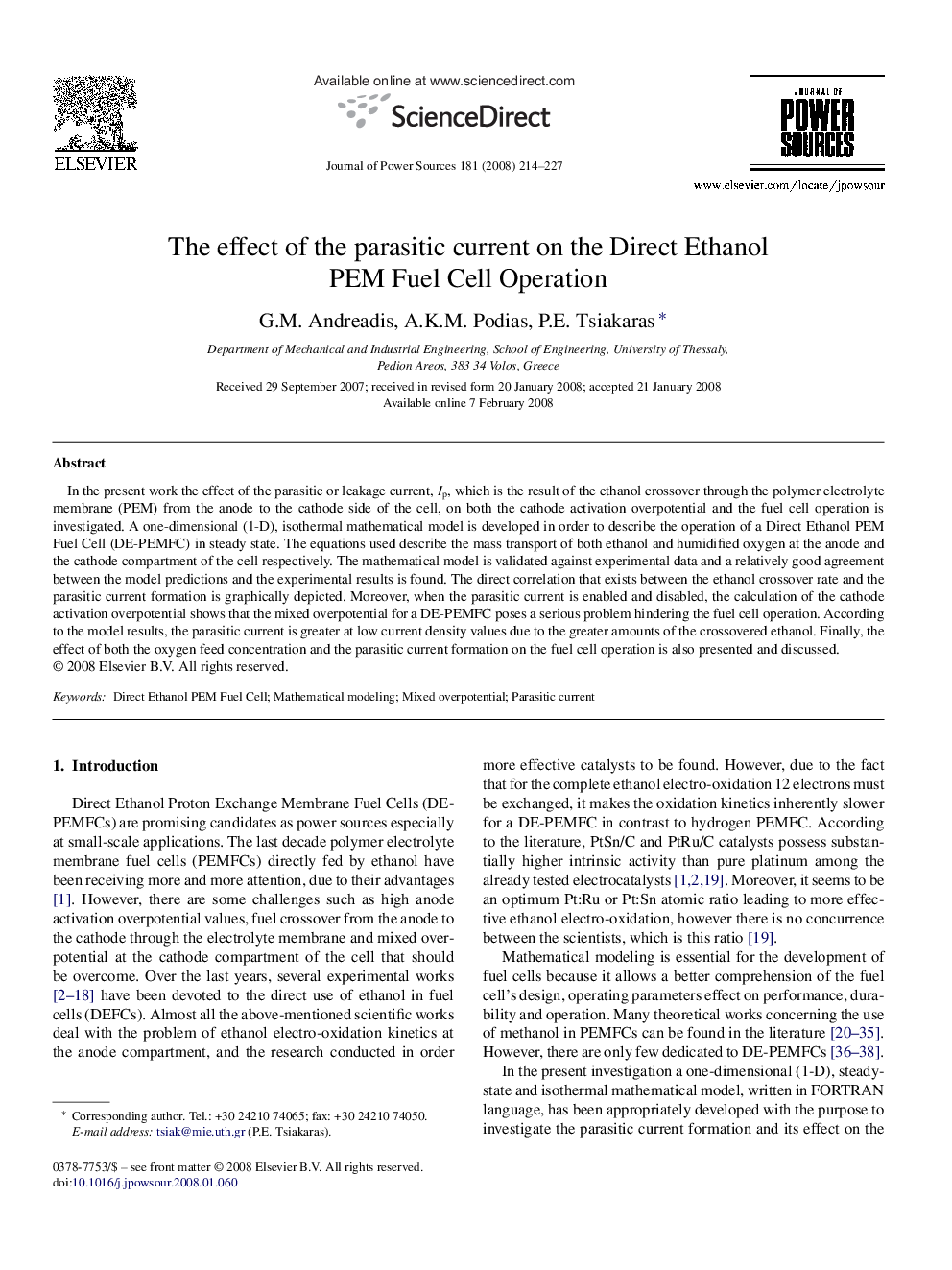| Article ID | Journal | Published Year | Pages | File Type |
|---|---|---|---|---|
| 1294639 | Journal of Power Sources | 2008 | 14 Pages |
In the present work the effect of the parasitic or leakage current, Ip, which is the result of the ethanol crossover through the polymer electrolyte membrane (PEM) from the anode to the cathode side of the cell, on both the cathode activation overpotential and the fuel cell operation is investigated. A one-dimensional (1-D), isothermal mathematical model is developed in order to describe the operation of a Direct Ethanol PEM Fuel Cell (DE-PEMFC) in steady state. The equations used describe the mass transport of both ethanol and humidified oxygen at the anode and the cathode compartment of the cell respectively. The mathematical model is validated against experimental data and a relatively good agreement between the model predictions and the experimental results is found. The direct correlation that exists between the ethanol crossover rate and the parasitic current formation is graphically depicted. Moreover, when the parasitic current is enabled and disabled, the calculation of the cathode activation overpotential shows that the mixed overpotential for a DE-PEMFC poses a serious problem hindering the fuel cell operation. According to the model results, the parasitic current is greater at low current density values due to the greater amounts of the crossovered ethanol. Finally, the effect of both the oxygen feed concentration and the parasitic current formation on the fuel cell operation is also presented and discussed.
